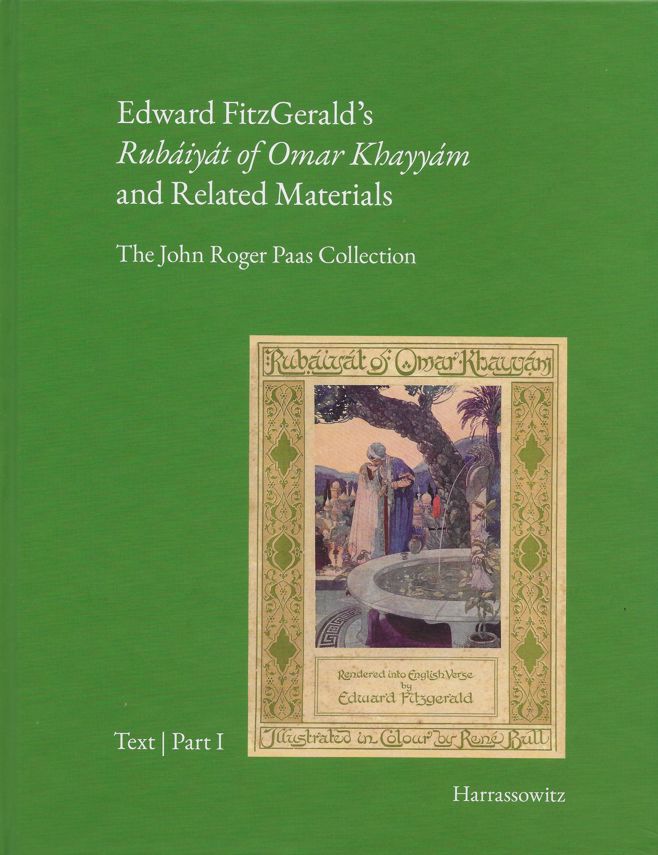Foreword IX
Introduction XIII
Explanatory Notes XVII
Abbreviations & Symbols XIX
PART I: Versions of the Rubáiyát
I FitzGerald’s Versions (nos. 1-4348) 3
II Manuscripts and Illuminated Leaves (nos. 4349-4367) 562
III The Rubáiyát in Anthologies (nos. 4368-4460) 565
IV Recordings of the Rubáiyát (nos. 4461-4544) 570
V English Translations other than by FitzGerald (nos. 4545-4708) 578
VI Multilingual Editions (nos. 4709-4796) 605
VII Translations in Languages other than English (nos. 4797-4918) 626
PART II: References to the Rubáiyát
I Novels and Biographical Narratives about Omar and/or the Rubáiyát (nos. 4219-4936) 649
II Books and Articles about the Rubáiyát (nos. 4937-5036) 652
III Works and Verses about FitzGerald and/or Omar Khayyám (nos. 5037-5123) 661
IV Bibliographies of the Rubáiyát and Works about Artists, Editors, etc. (nos. 5124-5251) 670
V Publishers’ Catalogs Prospectuses, and Advertisements (nos. 5252-5307) 679
VI The Word “Rubáiyát” in Titles (nos. 5308-5366) 684
VII Titles Inspired by Verses in the Rubáiyát (nos. 5367-5395) 688
VIII Works with References to the Rubáiyát or Omar Khayyám (nos. 5396-5415) 691
IX Quatrains in the Rubáiyát quoted (nos. 5416-5452) 693
X Verse Founded on, or in the Meter of, the Rubáiyát (nos. 5453-5581) 696
XI Calendars (nos. 5582-5633) 710
PART III: The Rubáiyát in Popular Culture
I Stage, Screen, and Radio (nos. 5634-5715) 721
II Musical Scores and Sheet Music (nos. 5716-5782) 734
III Parodies and Spin-offs in Books and Magazines (nos. 5783-5985) 740
IV Omar Khayyám Clubs (nos. 5986-6043) 761
V Advertisements (nos. 6044-6272) 766
VI The Names/Words “Omar” and “Rubáiyát” used non-commercially (nos. 6273-6325) 778
VII Greeting Cards, Postcards, and Stamps (nos. 6326-6383) 782
VIII Artwork (nos. 6384-6546) 787
IX Realia (nos. 6547-6757) 798
X Related Materials (nos. 6758-6826) 811
Part IV: Related FitzGerald Items
Letters and other Works (nos. 6827-6861) 819
Indexes
Artists 825
Editors, Compilers, Commentators, and Contributors 829
Authors of related Works, Bibliographers, and Composers/Songwriters 833
Translators 837
Printers 839
Fine Binders 842
Early Association Copies 843
Concordance (Potter / Paas) 844
